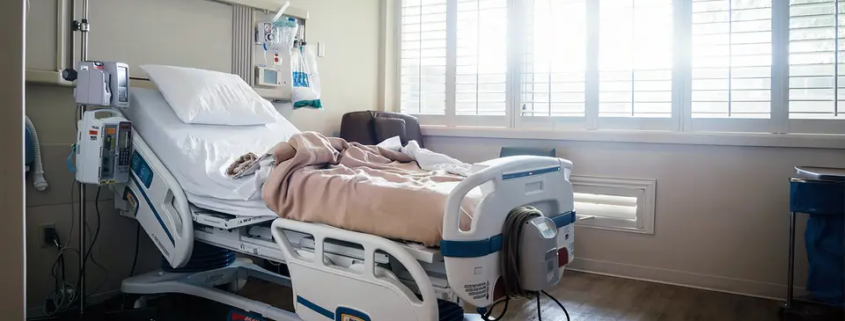How to Prevent Addiction Patients From Leaving Treatment Against Medical Advice
It’s widely known that length of stay is one of the most important determinants of success in substance use disorder (SUD) treatment. Data has proven that the longer we can keep patients engaged, the betteropens in a new tab or window their long-term prognosis.
Unfortunately, it’s also one of the hardest factors for providers to overcome. Between the difficulties of withdrawal and the overwhelming desire for substances driven by the disease, far too many patients choose to walk away. In fact, research shows the rate of patients leaving against medical adviceopens in a new tab or window (AMA) has increased substantiallyopens in a new tab or window over the last several years, from 10-15% in 2017 up to 23% in 2019.
If we’re lucky, we get them back in treatment before tragedy strikes. According to the literature, over 35% of patients who leave healthcare facilities AMA return within 30 days, and 16% get readmitted. Sadly, many don’t make it back. Clearly it would be far better for them to stay the first time around.
Anecdotally, the variables thought to drive AMA discharge have focused on demographics: patients who are young, male, and local are presumed to be at greater risk. However, data show otherwise. In fact, demographics have very little, if anything at all, to do with it. Instead, the three main variables that are associated with AMA discharge are psychosocial. Here’s what providers can do to help patients overcome those obstacles.
Life Circumstances
Many patients believe the circumstances in their life make it impossible for them to stay in treatment. For example, I had one patient with a wife and three children whose utility company was prepared to cut off service to their home for nonpayment. The patient felt strongly that his wife couldn’t function without him while he was in rehab. But is that accurate? Or is that merely his perception? Could someone else in the family step in to help while he got treatment?
As providers, we must help patients determine if these circumstances are accurate, and if not, help them see a more evidence-based reality. Of course, life circumstances can also contribute to the SUD condition. Difficult family dynamics, trauma, co-dependence, and co-occurring mental health issues can all play a role in the context that contributes to SUD. Sometimes separationopens in a new tab or window from those circumstances can be the best course of action.
That’s why it’s essential to conduct biopsychosocial assessments upon intake to get to the heart of these conditions. Start by asking questions about the patients’ social and family dynamics and what brought them to treatment. This evaluation can help get to the “why” behind their substance use and their desire for treatment. Cognitive interpersonal psychotherapy can help patients reframe their point of view on their circumstances, help them see how they may have contributed to the SUD, and ultimately, how completing treatment can help them stop using and provide coping skills to deal with difficult circumstances going forward.
Motivation
Intrinsic motivation is essential for successful treatment. Very rarely will external motivation be effective, including ultimatums or threats of incarceration, job loss, or divorce. Patients must learn to visualize sobriety, what it feels like for them, and what it can mean for their future. They have to want it and see it as a real possibility.
When external motivators are the driving force behind seeking treatment, the use of motivational interviewing can help patients to shift their “why.” This technique helps patients connect the things they care about and their future goals with sobriety, and boost their confidence in believing they can achieve those goals.
I had one patient, a young man, who had been in and out of our facility several times. His mother and brothers would force him to come, and he made it clear he was only here to detox, didn’t want group therapy, and would go right back to using in short order. On his most recent admission, we talked about the importance of group therapy and helped him develop a better understanding of his disease and what recovery could actually do for him beyond detox. This time, it clicked. Instead of being coerced into treatment, he asked to stay longer, doing intense outpatient therapy every morning and going to work in his family’s auto shop every afternoon. It has made a huge difference in his prognosis.
Readiness
Patients who aren’t ready to acknowledge the negative impact substances have had on their lives are at greater risk of AMA discharge. They might believe they have their substance use under control or can get it under control on their own. To avoid leaving treatment AMA, they have to first recognize the problems their untreated disease has caused in their relationships, financial situation, and personal health and safety, and understand that it is nearly impossible to overcome addiction on their own.
For as much as we’ve made progress in educating the public that addiction is a disease, a surprising number of SUD patients still don’t see it that way. As part of the process, we have to help them see SUD as a chronic conditionopens in a new tab or window, like diabetes or cancer, that has to be managed long-term through lifestyle change. The goal of treatment is to put that disease in remission and teach them skills to help keep it that way.
Helping patients know what to expect in treatment is a key factor in readiness and avoiding AMA. The first few days of treatment are tough. Patients are often still under the influence for several days after admission, which makes them much more likelyopens in a new tab or window to discharge AMA as substances cloud their judgment. Providers must explain the impact substances have on their brain and why the urge to leave likely isn’t valid — it’s the substance talking.
Providers should explain the physical challenges of detox and withdrawal. The discomfort, especially when patients are unprepared for it, can be a huge driver in AMA discharge when patients know they can leave, use again, and feel “better” immediately. Employing medication-assisted treatment (MAT), especially for alcohol and opioid use disorder, can substantially loweropens in a new tab or window the likelihood of AMA discharge.
Knowing that these psychosocial variables are the most important factors in AMA discharge means that we, as providers, can actually help patients to overcome them. We obviously can’t change patients’ age, gender, or any other demographic, but we can — through targeted therapy — help them change their way of thinking about the disease to give them the best chance of success through holistic treatment and targeted interventions.
Jesus Perez, PsyD, is a licensed psychologist and clinical director of Recovery First Treatment Centeropens in a new tab or window, an American Addiction Centers facilityopens in a new tab or window.




Leave a Reply
Want to join the discussion?Feel free to contribute!